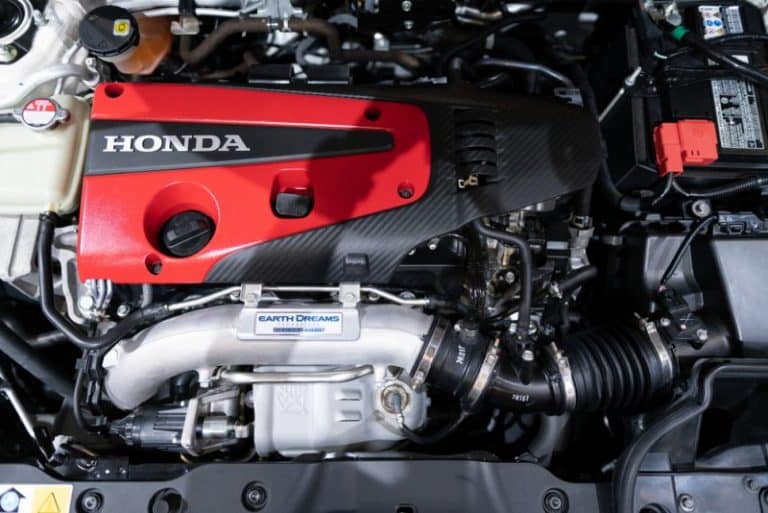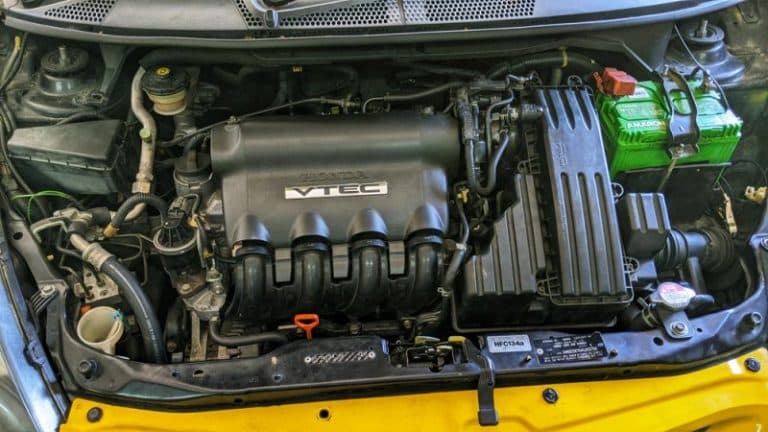Does Honda Use Break-In Oil? (Read This First)
The need for high-quality oils is arising as most manufacturers want to produce fuel-efficient engines with a high level of performance that provides protection and assures the longevity of engine life.
An efficient way to ensure this is by properly maintaining the essential part of a vehicle protected by the engine oil.
Break-in oil is simply a lubricant containing ZDDP, zinc/phosphorus, and molybdenum anti-wear compounds. These compounds form a covering that reduces friction in areas with closing surfaces.
Honda does not use a special break-in oil. However, some parts of the engine have a coating that prevents wear and tear. In addition, the assembly lubes used in manufacturing have a high percentage of molybdenum which helps with the break-in process.
What Oil Does Honda Use From The Factory?

The molybdenum content found in engines does not come from the oil, but from the assembly lubes, and it’s used to protect the moving parts of your machine before it is filled with oil.
The molybdenum has no function after your car has been run in properly.
From the factory, honda vehicles come with standard motor oil. Read our post to know if Honda uses Metric Or Standard or not?
However, other parts like the assembly lubes, camshafts, etc., have a high amount of molybdenum suitable for metals because of their anti-wear properties.
As a result, it dissolves into the engine oil.
New Honda cars come with OW-20 oil, which is available either as semi-synthetic oil or fully-synthetic oil.
Synthetic oil is designed exclusively for Honda vehicles because of its effectiveness. It offers better engine protection as it flows into your engine to provide proper lubrication.
Synthetic oils have many advantages, including resilience to viscosity, improved engine response and efficiency of fuel, thermal stability, minimal rate of wear and tear, and reducing the effects of pollution.
The OW-20 is a good winter viscosity oil optimal for use under low thermal conditions; it ensures superior engine performance by preventing deposits, corrosion, sludge formation, and smooth oil flow without resistance or friction.
It also has active cleaning agents with a balanced additive system. Synthetic oil is composed of chemical compounds made by breaking down and rebuilding petroleum molecules.
Do New Cars Come With Break-in Oil?
New cars do not require break-in oil. What is needed from you is to drive under a moderate load for a few miles, after which you can change your oil.
Engine break-ins are not as crucial as they used to be decades ago, as technology is advancing fast. New engines are being broken in before installation.
The engine gets used to your driving pattern over time.
You’re expected to not drive at a constant speed for a long time; you should drive at varying speed rates, avoid towing your new vehicle and avoid pushing your engine too hard.
Similarly, you should avoid hard stops and full-throttle starts, especially in the first few miles.
Cars have evolved so that you do not have to worry about breaking in. The aluminum and steel used for engine parts are treated from the factory.
The only thing you should do is change your car’s oil after running for at least 1,500 miles due to metal wearing off, which has to be removed to prevent long-term damage to your engine.
Changing your car oil before the required time will prolong the period needed for the engine to reach its maximum efficiency.
Engine oils and other lubricants are also not the way they used to be. Synthetic oil is best to use because it reduces the rate of internal wear and increases engine life.
In addition, it is unarguably superior to conventional oil in significantly important ways.
Is Break-in Oil Necessary?
Break-in oil is necessary as it’s an essential part of engines. It assists the wear process so that regular oil can maintain the protection of your machine.
Camshafts and lifters wear out at a fast rate, which results in a drastic reduction in the power and efficiency of the engine.
In addition, since it’s a high load area, pressure can remove metal particles from the lobes and deposit them in the oil, which will eventually circulate through the engine and cause long-term damage.
Break-in oil stiffens the camshaft and lifters making it resilient to wear. It allows friction and protects the piston rings as a low load area.
It also covers areas with increased friction.
The additives in break-in oil ZDDP (zinc/phosphorus and molybdenum anti-wear compounds) are heat activated.
These additives form a layer that prevents metal-to-metal contact and averts the wear and tear of the cam and tappet. Conventional oils are best for the breaking-in process.
However, synthetic oils increase the break-in process, which destroys proper ring settings because they have low friction coefficients.
Molybdenum sulfide protects your engine against corrosion and reduces friction. In addition, its dispersant nature traps contaminants and keeps them away from engine parts.
Conclusion
Modern vehicle engines do not require breaking-in anymore as it’s done before installation.
For this reason, the OW-20 synthetic oil is recommended by the manufacturers of Honda cars because of its heat resistance, less internal friction, and cold-weather performance to ensure the longevity of your engine.
This is the least expensive form of insurance for your vehicle with increased performance improvement.






